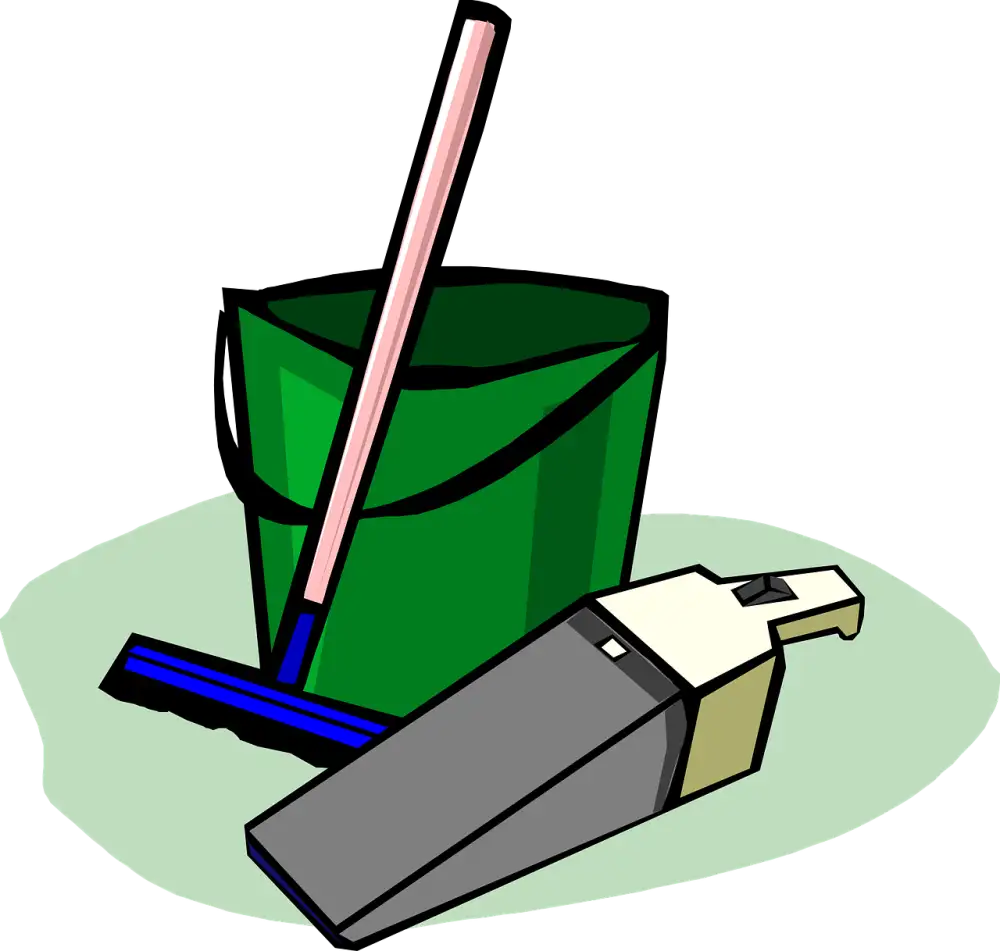Mastering the Art of Cleaning a Cast Iron Skillet: Your Ultimate Guide for Home Cooks

Cleaning a cast iron skillet is an essential skill for any home cook. This versatile and durable piece of cookware requires special care to maintain its quality and prevent rusting. In this ultimate guide, we will walk you through the step-by-step process of cleaning your cast iron skillet, ensuring that it remains in pristine condition for years to come. Whether you're a seasoned chef or just starting out in the kitchen, mastering the art of cleaning a cast iron skillet is a must-have skill that will elevate your cooking experience. So let's dive in and discover the secrets to keeping your cast iron skillet looking and performing its best!
Gather necessary materials for cleaning
To properly clean a cast iron skillet, it is important to gather all the necessary materials beforehand. This will ensure that you have everything you need within reach and can complete the cleaning process efficiently. The materials you will need include a soft sponge or brush, mild dish soap, coarse salt, vegetable oil or shortening, and paper towels or a clean cloth for drying. Having these items ready will make the cleaning process much smoother and help maintain the quality of your cast iron skillet for years to come.
Preparing the skillet for cleaning
Before you start cleaning your cast iron skillet, it's important to prepare it properly. First, remove any leftover food particles by scraping them off with a spatula or a stiff brush. Be gentle to avoid scratching the surface of the skillet. Next, rinse the skillet under warm water to remove any loose debris. Avoid using harsh scrub brushes or abrasive cleaners as they can damage the seasoning of the skillet. Once rinsed, use a paper towel or cloth to pat dry the skillet. Make sure it is completely dry before moving on to the next step of cleaning.
Cleaning the skillet using mild soap and water
To clean your cast iron skillet, start by rinsing it with warm water to remove any loose debris. Then, add a small amount of mild dish soap to a sponge or brush and gently scrub the surface of the skillet. Be sure to avoid using abrasive materials that can damage the seasoning. Rinse the skillet thoroughly with warm water to remove all soap residue. Remember, excessive use of soap can strip away the seasoning, so use it sparingly. Once clean, proceed to the next step in caring for your cast iron skillet.
Removing stubborn residue with salt and oil
Removing stubborn residue with salt and oil is an effective method to restore the shine of your cast iron skillet. Start by sprinkling a generous amount of coarse salt onto the surface of the skillet. Using a paper towel or a clean cloth, scrub the salt into the stubborn areas, applying gentle pressure. The abrasive nature of the salt helps to lift off any stuck-on food particles.
Next, rinse the skillet under warm water to remove the loosened residue and salt. Avoid using soap at this stage, as it can strip away the seasoning. Once rinsed, dry the skillet thoroughly with a clean towel.
To further enhance the cleaning process, apply a small amount of cooking oil onto a paper towel or cloth. Rub this oil all over the skillet's surface, including both inside and outside. This step helps to re-season and protect your skillet from rusting.
After applying oil, place the skillet upside down in an oven preheated to 350°F (175°C) for about an hour. This process allows the oil to polymerize and create a non-stick layer on your skillet's surface.
Once cooled, your cast iron skillet will be ready for use again. Remember to repeat this cleaning method whenever stubborn residue builds up on your skillet, ensuring its longevity and optimal performance in your kitchen.
Drying the skillet thoroughly
Drying the skillet thoroughly is crucial to prevent rusting. After washing, use a clean towel or paper towels to remove any excess water from the skillet. Make sure to dry both the inside and outside surfaces completely. If needed, place the skillet on a low heat burner for a few minutes to evaporate any remaining moisture. Avoid air drying as it may lead to rust formation. Remember, a completely dry skillet is essential for maintaining its quality and preventing any damage.
Seasoning the skillet to maintain its quality
Seasoning the skillet is an essential step to maintain its quality and ensure its longevity. After cleaning and drying the skillet, it's time to season it. Start by applying a thin layer of cooking oil or melted shortening all over the skillet, including the handle. Make sure to use an oil with a high smoke point like vegetable oil or flaxseed oil.
Next, place the skillet upside down in an oven preheated to 350°F (175°C). This will allow any excess oil to drip off and prevent pooling. Place a baking sheet on the bottom rack to catch any drips.
Let the skillet bake for about one hour, then turn off the oven and let it cool completely inside. This process helps create a protective layer of polymerized oil on the surface of the skillet, making it non-stick and resistant to rust.
Remember, seasoning is not a one-time thing. It's recommended to repeat this process periodically to maintain the skillet's seasoning. Regular use and proper cleaning will also contribute to building up a strong seasoning layer over time.
Avoid using soap or harsh detergents when cleaning your seasoned cast iron skillet as they can strip away the seasoning. Instead, use hot water and a brush or sponge to remove any food residue.
By properly seasoning your cast iron skillet, you'll enhance its performance and prevent food from sticking. With each use, your skillet will develop a beautiful patina that adds flavor and character to your dishes. So take care of your cast iron skillet, and it will reward you with delicious meals for years to come!
Storing the skillet properly
Storing the skillet properly is essential to maintain its quality and prevent rusting. After cleaning and drying the skillet, make sure it is completely cool before storing. Avoid stacking other cookware on top of it, as this can cause scratches or damage. To prevent moisture buildup, place a paper towel or cloth inside the skillet to absorb any excess moisture. Store the skillet in a dry place with good ventilation, away from humidity and direct sunlight. If you prefer to store it with a lid, ensure that the lid is also clean and dry before placing it on top. By following these storage tips, your cast iron skillet will be ready for use whenever you need it.
In conclusion, mastering the art of cleaning a cast iron skillet is essential for any home cook. By following these steps and using the right materials, you can ensure that your skillet remains in top condition for years to come.
Here are some final tips to keep in mind:
1. Avoid using harsh chemicals or abrasive scrubbers as they can damage the seasoning.
2. Never soak your cast iron skillet in water for extended periods.
3. Regularly inspect your skillet for any signs of rust and address it immediately.
4. If food is stuck on the skillet, use a nylon brush or scraper to gently remove it.
5. Always dry your skillet thoroughly after washing to prevent rusting.
6. Store your cast iron skillet in a cool, dry place to maintain its quality.
By following these guidelines, you can enjoy the benefits of cooking with a well-maintained cast iron skillet and create delicious meals for years to come. Happy cooking!
Published: 31. 12. 2023
Category: Home



